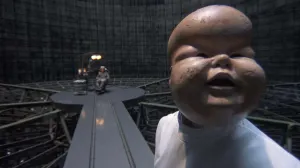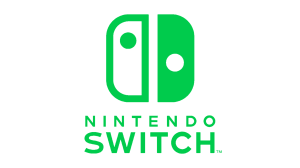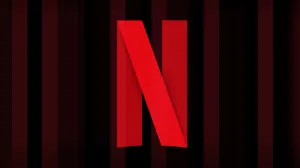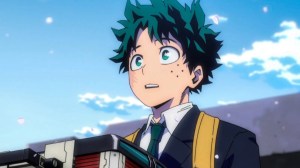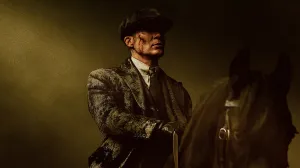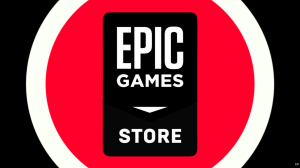Farel Dalrymple first introduced readers to his weird world of youth and magic in the original graphic novel The Wrenchies. He’s returning to that world with two releases from Image Comics this week.
Videos by ComicBook.com
One is It Will All Hurt, a collection of Dalrymple’s webcomics set in that universe. The second is Proxima Centauri #1, the first issue of a six-issue series revealing more about the history of Sherworld Presley Breadcoat.
ComicBook.com spoke to Dalrymple about these new releases, how they tie back in with The Wrenchies, and more.
ComicBook.com: What are Proxima Centauri and It Will All Hurt, and how do they relate to The Wrenchies?
Farel Dalrymple: Well, it has the main character from The Wrenchies — he didn’t get the most lines or anything, but the story was about this guy — Sherwood Presley Breadcoat and him growing up in this magical underworld. Well, he’s in the real world, but him and his brother go into this evil cave and then that kind of opens the door to this other reality that they have to deal with. And I talked a little bit about it in The Wrenchies. The Wrenchies kind of goes his whole life, where he goes from a little kid to him far in the future, he’s this old decrepit, dying thing.
And so there’s a part in The Wrenchies, it’s a couple panels where I mention he’s on this space station place called Proxima Centauri, light years from Earth. Proxima Centauri is the story of that time in his life, maybe three years, he’s a teenager on board this space station thing, trapped in this dimensional cage kind of thing with some other random people. There’s this guy, The Scientist, who’s a character from The Wrenchies, but he’s in this big robot body in The Wrenchies. In Proxima Centauri, he’s in his human form, trying to build his robot body, giving Sherwood advice, trying to help him not be such a jerky teenager, I guess.
There’s a couple other characters, Hollis pops up and he was in The Wrenchies and Pop Gun War. I like having characters from different stories make cameos or in that story, too. I have a loose timeline figured out for all of these guys. Where they’re at and where they’re going to be at, that kind of stuff.
Building a Shared Universe
Was it always your intent to build this kind of shared universe where all of these stories take place or did it just kind of occur naturally from having a character from one story pop up in another story here and there?
I’ve just been doing one story at a time, as far as drawing the thing. I get ideas for future stories and over the years doing this, I’ll fill up notebooks or sketchbooks with different ideas and stuff. I wasn’t necessarily planning on, “I’m going to create this universe where all these characters are.” It was just something I felt happened organically. As I was doing a story I was like, “Oh, I’m going to use this guy from this last story, or have this character that I like appear in here.” That’s kind of the way with Hollis, he sort of just worked his way into it. I started him as a parody character, but I did a couple of stories for Adhouse Books — they did a Project: Superior thing and had a comic called Superior Showcase — and I originally did stories for him that were “Little Kid Superhero Guy.” He was having trouble adjusting at school and things.
Sherwood was more, I wanted to create this story, The Wrenchies, about these brothers, but then I also wanted to do this post-apocalyptic fantasy story. It just seemed integrating the two was, I don’t know, seemed to make sense with this story I was trying to tell. When I was younger, I remember seeing a thing in a Madeleine L’Engle book, I think it was Many Waters, which is the fourth book in the Time trilogy thing. A Wrinkle in Time, A Swiftly Tilting Planet, and A Wind in the Door, were the three. I don’t think they’re in that order. Then there was Many Waters and in the beginning of that, I saw she had a little timeline, like a family tree, of all her characters. I noticed that a lot of them crossed over in between different books. She even had, “Oh, these are my young adult books that aren’t science fiction at all,” and then a couple of the characters would cross over between the two worlds. I really liked that idea, I guess.
Later on, reading Kurt Vonnegut and stuff, he would do that. He would have little characters, even himself, pop up in his books every once in a while. I guess you can do that as a writer, that’s OK. I let myself do that as I’m creating comics.
I like the way it’s kind of this world building thing without me having to really do much world building. As I’m telling these stories, and they’re all my stories so they’re all out of my head, my universe, my own personal universe, it’s a way to reiterate that as I’m creating.
The Rules
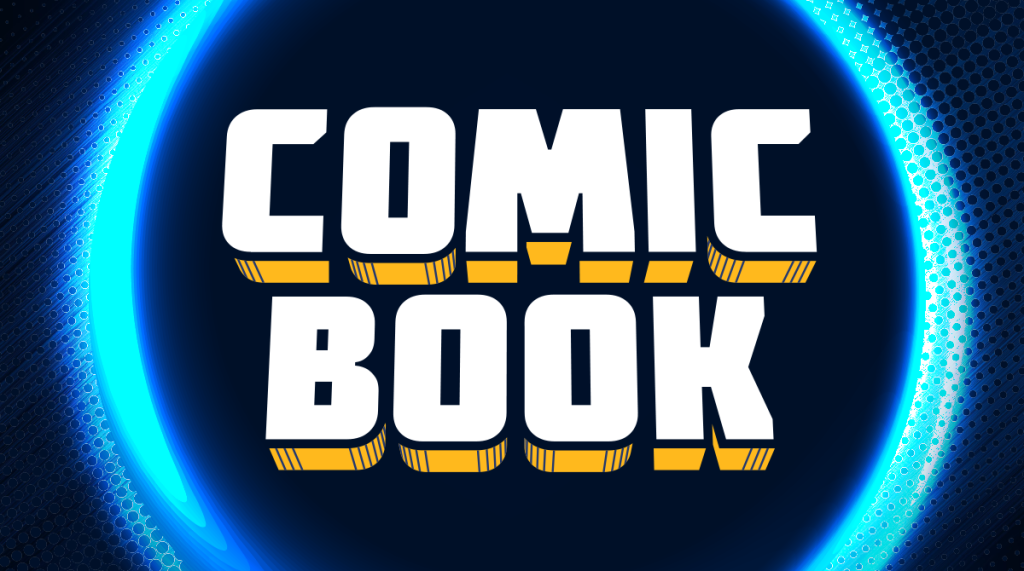
Do you have a set of rules for your universe? For example, for how magic works or something like that?
There’s some rules in my head, I know where he’s going to end up, and I think everyone else does if you read The Wrenchies. Even him getting off this space station thing, it’s not really spoilers to say he eventually gets out of there. As far as the way magic works, and the way laser guns or even the way the environment that he’s in works, I don’t necessarily have a specific set of rules. I have things like, “I don’t really want to put a lot of pop culture references in my work.” There might be a couple here and there that I do.
I guess most of my stuff has a dream logic to it. Even the stuff like Pop Gun War, which is more set in a real world, a magical realism type thing. This is more of a space opera, science fantasy, fantasy quest type stuff. The same thing with It Will All Hurt. I wanted the environment that they’re in, in that sense, to be almost malignant, almost like the world they’re inhabiting is trying to do them in. Eventually. It’s kind of like, “OK, magic exists.”
But the idea of magic, to me, doesn’t have rules. It’s not, “Oh, this isn’t Earth-based magic.” That’s fine, I like reading stories like that where I can tell the writer thought about the way everything works, but, to me it’s like, I don’t know. It just sort of seems you can’t really explain that stuff without it seeming formulaic or something. To me, magic is just an excuse to push the story along that I want to tell.
Inspirations and Influences
Are there any specific inspirations you for your work in this universe? It’s science fiction/fantasy material, but not easily classified as Tolkien-esque, or Lovecraftian, or anything like that. You did mention Madeleine L’Engle.
Yeah, totally. She was a big one. I like Philip K. Dick, Lovecraft, Tolkien, I liked those guys, but I feel like those kinds of writers are really smart, and they do have a rulebook for how everything works. I think, for me, it’s more of I like the stuff that’s influencing it. It’s more coming from my referencing my youth, growing up watching Star Wars and Star Trek and every other crazy, weird thing that I could see on cable.
Or, I just went to see Ninja III: The Domination last night at this local theater, The Hollywood Theater, and they were doing a Bingo thing. I actually had to walk out of the movie because people were shouting stuff. Which is the point of it, and I should have known that before I went there, but it was really difficult for me not to be irritated by all the people yelling stuff that haven’t seen this movie before, that I’ve seen probably 100 times and I really like. I was like, “OK, I guess I’ll just watch it at home.” Kind of wanted to see it in the theater, but whatever.
I don’t necessarily think, “Oh this is great art that affected me deeply.” I’ve seen so much stuff like that, it all just gets regurgitated out in a way on the page. There are some conscious things that I do like writers and cartoonists that I look at, that I try to take stuff from. Madeleine L’Engle was one of them and A.A. Milne, the Winnie the Pooh stuff. I got the Hundred Acre Woods vibe, that was a really big deal to me, when I was working on Pop Gun War. With The Wrenchies, the springboard that I was inspired by for that book was this movie called Over the Edge. It’s a 1979 movie about these kids that are in this small town, there’s nothing to do except party all the time and do drugs. They end up rioting at the school and burning cop cars and stuff.
With Proxima Centauri, I have a bunch of stylistic, artistic influences, as far as the way I draw. Taiyō Matsumoto is probably the biggest influence in that, as far as making a comic book, making a thing, I look at his stuff all the time. I want to do what that guy’s doing. I would say he’s probably the biggest one of that. I’ve also been looking a lot if Image books. Rick Remender writes a lot of comics for Image. He’s doing this one called Seven to Eternity, drawn by Jerome Opena, that is incredible. I love that book so much. It’s almost hard to read because it’s drawn so pretty.
I’ve been looking a lot at Image stuff like that to get a vibe, since I’m doing a series for Image, I just want to get a vibe of how to do that, I guess, because I’ve never really done anything like this before. Brandon Graham’s work, he’s a big influence on me, too, I’d say.
Exploring Different Formats

The Wrenchies was a graphic novel. It Will All Hurt started as a webcomic. Now Proxima Centauri is a serialized comic at Image. Was it your intent going in to spread these stories across different formats?
It was partly intentional and partly the zeitgeist or the spirit of the times. I did my first book at school, it was a forty page floppy that I handed out because I saw some other people did that. I knew these guys that self-published their own book and got into the small press expo, around the time it just started. I went after the second or third year, one of the first times I went to that, and I just passed out my book there and it was like, “Oh cool.” And then I have a club of all these people that are doing this thing. I was like, “What do I do know? I should do another one of those.” So, that’s when I did Pop Gun War, and I did it as issues, self-published issues. There would be six months or something in between each issue, it wasn’t like a monthly book. Whenever I would do one I would put in PREVIEWS.
From that, Diana Schutz, someone gave her a copy of Pop Gun War and Diana Schutz, who was an editor at Dark Horse at the time, she contacted me about doing some work for her based off that. I was like, “OK cool.” And I was working at a coffee shop in town. From that, she offered to collect it, all these five issues under trade. It was like, “Oh, I can have a graphic novel now. I’m in the graphic novel club.” I think I did a bunch of work for hire stuff after that. I did Omega The Unknown and a bunch of other projects. I did a thing for DC called Caper, that I drew. There wasn’t any of these I wrote and drew myself. I was so proud of the work, pretty good stuff, but I was just going with the flow, just like, “OK I should do this now.”
Then when I moved to Portland, I met a book agent. A friend of mine introduced me to a literary agent. She was like, “Hey, do you got something you want to pitch? Graphic novels are really big right now.” It was like this weird bubble, where these publishers were giving out big advances for books. It seemed like there was a lot of hype and people were like, “Yeah, you got to do this graphic novel thing.” I was friends with Craig Thompson, he had Blankets come out a few years previously, and I was like, “Oh yeah, I should do this graphic novel thing, that seems to be the thing.” By the time I was done with it, I felt like that bubble had already burst. They weren’t operating the same way. Children’s literature had seemed to kind of blown up more. I don’t think it had the big sales that the publisher and my agent were expecting, from The Wrenchies.
Then after that, I just wanted to do something where people could give me an immediate reaction. Because, while I was working on The Wrenchies, I did a few issues of Rob Liefeld’s Prophet, like Brandon Graham. Which, totally to me is like Brandon Graham’s Prophet because he completely changed the whole thing. That was a lot of fun, and it was neat doing that because I hadn’t really ever done a comic before where I had people react to it like that. I wasn’t used to getting feedback about my work. I worked on The Wrenchies in solitude. I would even try to show my friends pages, and they were like, “I’ll just wait ’til the book’s out.” It was really disheartening pouring my heart into this thing so long and not have anyone see it.
Doing the Prophet issue, I was like, “Wow. This is great. People are telling me that I’m good,” or something. While I was working on The Wrenchies, I just started doing It Will All Hurt as a way to get comics down really fast without stressing about it. It was like blowing off steam while I was working. Wrenchies was taking me so long I was just like, “All right, I’m just going to draw a chase scene and just make it up as I go along. Not going to pencil it, just going to straight pen and then color it and put it on the Internet.” My friend Zack [Soto] had a site called Study Group Comics and I put it on there as a webcomic. And then he suggested, “Hey, we should self-publish, we should put these out as books.” He helped me publish those as issues. We just did three issues and they were in the Diamond catalog for three months and I was like, “Oh cool. I got like a monthly book out now.”
It was such a small run and with small distribution, relatively small distribution, that I wanted to put it out, get it more out there in the world. When I was pitching the Proxima Centauri to Eric Stephenson at Image, I also suggested, “Hey do you want to collect the It Will All Hurt into a trade?” I guess that’s just the way it all turned out.
With Proxima Centauri, I was specifically like, “I want to do a monthly comic book that’s my own comic book.” I think, basically because I had serialized Pop Gun War and the sequel to Pop Gun War in Island and collected that into a trade that came out from Image to relative silence. Even the stuff when I was doing Island, it was weird. When Island was coming out, no one was talking about it, that I was aware of. It wasn’t on any review lists or anything. It wasn’t until the last issue which got a lot of controversy over it. It also was canceled around that time. People were like, “Oh that was a great anthology. I loved that.” I was like “Really? No one mentioned that to me.”
I like that I have work out in print on a regular basis and I was thinking like, “OK, my next thing I want it to be a monthly book. I want to do a six-issue series, collect it into a trade, do another six-issue series, collect that into a trade.” Also, I’m friends with Rick Remender, who works for Image and he has a bunch of artists that work for him that are all amazing. “Jealous” isn’t the right word, but I got inspired by them all doing that. I was like, “I want to try doing that. I’ve never done that before.” See how that goes. Hopefully, it works out. I don’t know.
That’s the long story of why I basically have done all these different formats. It’s a bit of my own decision and then also, too, going with whatever the times are dictating.
An Unusual Protagonist
You yourself have described Sherwood as kind of a bratty teenager. Why did you choose to focus on him in Proxima Centauri? He’s the protagonist, but do you think of him as a heroic character?
FD: He’s a hero in one sense, he’s the main protagonist, but I see him as a tragic figure and I want him to be like a human. I want him to be likable enough to where people want to keep reading the story, but I feel like…I don’t know. I don’t want to make some story about some guy that gets laid all the time and makes every right decision. That’s not my life. It doesn’t seem like reality to me. I know that the idea of having a comic book is it’s not necessarily supposed to be reality, but I like it when fantasy stories or science fiction or whatever reflect reality. Or at least to some degree.
I mean the action comics aspect to it or superhero comic, whatever, I see as more of dressing on me telling a story about human beings and how they relate to each other. The weird things you experience from a child’s perspective, not being able to fit in and feeling alienated from society. I still feel like that a lot of times. All the weird things that we go through as human beings and I don’t really know how to make someone be this perfect cool guy without it seeming stupid, to me. The way I write is I draw on stuff from my youth mostly, and experience that I have on a day to day basis. Just about getting irritated at people or saying something stupid to the wrong person, or whatever. Those little bits are what I guess get me excited about creating.
Even when I read novels or comics, I usually glom on to the one little weird moment. Like an exchange between someone where they’re looking at something or saying something, and I’m just like, “Oh that feels real.” Something about that resonates with me. That little thing, the rest of the comic I could completely be like, “Oh yeah, that was pretty good,” but that one part, I really liked that. It’s like having an album and it’s like, “Oh that’s pretty good.” And then there’s that one song on there or something or that one line from a song where you just can’t stop thinking about it. That’s kind of why I’m making him a shitty teenager.
I don’t really know any kid that’s around Sherwood’s age that isn’t kind of annoying and that’s why I have all those older characters and stuff and he doesn’t really have a lot of friends his age. They’re all just slapping him around a little bit and like, “Be better, come on. Grow up. Stop whining. You’re very privileged, you have all these superpowers and you can do anything you want, pretty much unsupervised and you’re crying about someone saying something mean to you or whatever. Come on man, get into it.” Hopefully, he’ll be inspiring to people, I don’t know.
I feel like your artwork, more than most mainstream comics artist, tend to abandon typical panel structure and rely on the composition of the artwork to tell the story. Is there a certain way you approach those kinds of pages and the way you tell stories that’s different from others?
A Classic Approach

I feel like your artwork, more than most mainstream comics artist, tend to abandon typical panel structure and rely on the composition of the artwork to tell the story. Is there a certain way you approach those kinds of pages and the way you tell stories that’s different from others?
FD: I kind of follow the How to Draw Comics the Marvel Way school, the John Buscema six-panel grid. That’s how I grew up making comics. I would make comics as a little kid and then even in art school. Like, Omega The Unknown and all that stuff was based off John Buscema, pretty much. It seemed like the way he structured pages.
With It Will All Hurt, specifically, even though it looks like it’s sort of based off of the six-panel grid, it’s kind of unconventional and weird. I did that specifically for the web as two-panel tiers. And I wasn’t necessarily thinking about how it would look in the comic format right away. I think after I was doing a little bit, I was like, “Oh, this would be great as…” and basically it turned into a six-panel grid, three tiers of two. For me, I was doing it as a way just to do it in digestible doses. I could do a bunch of these little – I had precut a bunch of paper, I think it was an eight by ten page that chopped in half, and had a stack of these pages and would rule out these two panels really quick, do the drawing pretty much as I went along with a pen. When Zack approached me about publishing, we were like, “Okay, let’s just put these like this.”
With the Proxima Centauri, specifically, I’ve been thinking more about the way manga is done. I’ve mentioned Taiyo Matsumoto, looking at his stuff and I started off Proxima Centauri. The first issue looks a little different than the rest of the other five issues, because, the first thing I did was I made a mini comic. I don’t think I even printed any out or gave them away, but I just folded paper over and drew it as a one-off original mini-comic. That’s why even the art in there looks a little more like It Will All Hurt and in the prologue section it looks a little crustier. As I’ve been going along, I’ve been trying to keep most of the pages two-panel pages. There’s some variation. Some of them get up to five or six, but for the most part, they’re in two or three-panel pages.
I wanted to do that specifically because it flows faster, people will be able to read it faster and also I’ll be able to draw it faster. I think that rhythm like the Manga, especially action comics and stuff. That rhythm, I don’t know, I read old Osama Tezuka book that Picture Box put out – they’re not a company anymore – put out a couple years ago called The Mysterious Underground Men. That was done almost every page is a splash page, practically. I liked the way that read.
There’s another book called The Oven by Sophie Goldstein, and I really like the way she told that story. It wasn’t a kid’s story, it was pretty sophisticated. There wasn’t a lot of dialogue and the art is super simple. There’s only two colors in it, it’s orange and black and then there’s … The Adhouse did that. It’s a really effective book. It’s a really powerful story and I just like the simplicity and how dense it felt, even though there wasn’t really a lot of words and things.
I’ve been trying really hard to follow that model. I don’t know if I quite did it, exactly, as I keep wanting to add dialogue and little other things and explanations like, “Well, this device it the…” I want to go on some kind of weird little rant about some kind of weird technology that doesn’t make any sense. I keep trying to rein myself in a little bit. Hopefully, it will all work out, it’ll all come together by the end and be this readable thing. We’ll see.
“Once you’ve made a comic…you’re a cartoonist.”
Any last notes or comments you’d like to leave readers with?
FD: I don’t know. I’ve said it before but the reason I did that first self-published comic, floppy thing – it was called The Misadventures of Super Monday – the reason I even made that and gave it out to people is because I heard Ray Bradbury say, “Have proof of your excellence to show your friends.” And that really stuck with me, and I was just like, “I’m going to make a comic to show my friends. Because I make art and I want them to know that.” Just from doing that, I was kind of surprised at how many people were legitimately impressed, like, “You made this? You made something?” So, I would tell anyone that wants to make comics, just make a comic. Who cares about breaking into the industry or anything like that. Once you’ve made a comic, you’re in the industry, you’re a cartoonist. Just make the comic.
*****
It Will All Hurt and Proxima Centauri #1 both go on sale June 13th.


